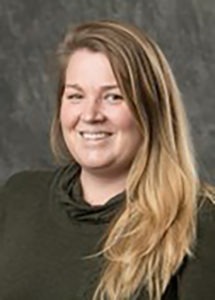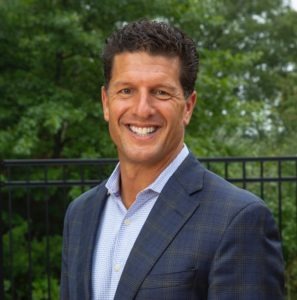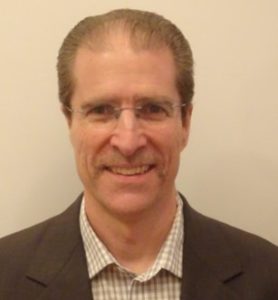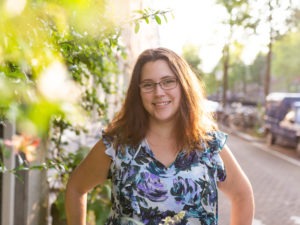Life Enrichment : It’s About Choice
| Residents of this CCRC demonstrate that living life to the fullest isn’t just for the young in years |
| By Linda Zinn, Managing Editor |
| As I drive down the road leading to Kendal at Oberlin, a not-for-profit continuing care retirement community (CCRC) in the small college town of Oberlin, Ohio, I observe that the campus is bustling with activity. A couple works in the garden outside their cottage; clusters of people are walking, talking, laughing, coming, going. It brings to mind a college campus, except that most of the “students” here have white hair. As I enter Kendal’s main building, the Community Center, I spot a jigsaw puzzle spread across a table near the grand piano in the living room, ready for someone to come along and add another piece to the psychedelic pink-and-green paisley pattern that is taking shape. I see a man and woman, he in white shorts and she in a white tennis dress, heading off to the tennis court for what I learn is their daily game. Someone tells me he’s in his 90s. Down a hall from the living room, a group of residents-Darlene Krato, chair of Kendal’s Art Committee and four friends from the art club-are busy hanging a new exhibit across from the in-house bank and beauty salon. It’s one of Kendal’s many art displays scattered throughout the building; some are on loan from local galleries and schools, and some are permanent exhibits. The laughter of the art club group catches the attention of a woman who’s guiding her motorized scooter in their direction on her way to an appointment. She jokes that she has five minutes to “waste” and says she might as well spend it with them, since they seem to be having so much fun. On the other side of the Community Center, a woman sits in the library, quietly enjoying the morning newspaper and the morning sun streaming in through the large windows behind her. |
| It’s a typical day at Kendal at Oberlin. The nonprofit Kendal Corporation’s approach to providing a home for older people is rooted in the principles of the Religious Society of Friends (Quakers), with emphasis on respect, independence and choice. This is one of nine Kendal communities. The first opened in 1973 near Philadelphia, with eight more following in Pennsylvania, Ohio, New York and Virginia. Two additional Kendal communities are currently in development. Kendal came to Oberlin when a group of retirement-age Oberlin College alumni, searching the country for a retirement community to move into, visited a Kendal community near Philadelphia. They liked it so much that they asked if the Kendal Corporation would build one in Oberlin. The representatives of the Kendal Corporation weren’t sure the market would support a new CCRC here, so they told the alumni that if they could get enough commitments to ensure two-thirds’ occupancy, one would be built. They did, and it was. Kendal’s philosophy is that “retirement and growing older can usher in new opportunities for growth and development, even if emerging limitations or infirmities necessitate a degree of dependency.” A Kendal brochure expands on this philosophy: “The lifestyle offered in our communities seeks to make the later years independent, productive, and stimulating while providing security, assurance of quality health care, and relief from many of the burdens of day-to-day life in environments not designed for older people. Such a community contributes to life enrichment, as residents have the opportunity to explore new experiences and new relationships and to cultivate lifelong concerns and interests.” And explore they do. Whether a resident prefers watching birds at the natural wetlands across from Kendal’s Community Center or at one of its ponds, enjoying a rousing game of bridge, attending a concert or class or lecture at nearby Oberlin College, participating in a science discussion, going for a refreshing swim, playing in a croquet or ping-pong tournament-or participating in any of the dozens of other cultural and recreational activities-there seems to be something for everyone here. Again, it’s all about choice. |
|
| Resident Ruth Schwaegerle volunteers as a docent at Oberlin’s historic Little Red School House. |
| Whether residents live in one of Kendal’s independent living apartments or cottages, or one of its private or semiprivate rooms in the personal care (assisted living) or health center (skilled nursing) wings, they are free to participate in any activity they’re capable of enjoying, according to Director of Admissions Maggie Stark. She explains that the only staff-planned activities for residents take place in the health center. All other activities, both on and off the Kendal campus, are planned by the residents themselves, through the Residents’ Association and its committees. They come up with the ideas, do the organizing and implementing of programs, and oversee the use of many of the campus’s common areas, such as the auditorium, craft rooms, library and gift shop. If a desired program requires funding, such as the recently opened putting green, residents raise the funds themselves. The activity choices available to Kendal’s residents aren’t, by any means, entirely recreational. Through the efforts of Kendal’s Volunteer Clearinghouse, started six years ago by residents Joe and Betty Verlie, Kendal residents can opt to volunteer-either for one (or more) of some 80 area agencies or within Kendal itself. Of 300 residents, more than 200 of them, including several from the health center, serve as volunteers. Stark points out that the volunteer opportunities help new residents find their niche within the community when they first move here. She says that although about 40% of the residents are alumni of Oberlin College-a connection reflected in the fact that residents have moved to Kendal (and back to Oberlin) from 26 other states-the remainder are new to Oberlin. Mrs. Verlie says, “It’s important for people to be connected to their world and to continue contributing. When I first came here, I didn’t know anyone and I didn’t know where I’d fit in. I thought, ‘If I feel that way, I’ll bet the other 60% of residents who aren’t from Oberlin might feel the same way.’ I’d been a volunteer for many years and saw an opportunity.” She and her husband formed a committee, and out of it the Volunteer Clearinghouse was born. |
| The Clearinghouse matches residents’ interests and abilities as closely as possible with agencies’ needs for volunteers, and helps to arrange transportation when needed. Mrs. Verlie explains that transportation has been one of the biggest challenges, but that it “always works out.” For example, some agencies bring the supplies to residents who stuff envelopes for them, so that residents can perform the service without leaving home. |
|
|
| The variety of volunteer spots residents fill is almost mindboggling. Some serve as docents, conducting tours at a local historical society’s three museum buildings or at Oberlin College’s Allen Art Museum. Some ring the familiar Salvation Army bells during the holidays, and some make book bags every year for underprivileged schoolchildren. Kendal’s residents tutor, counsel, make phone calls, deliver Meals on Wheels, record books on tape for the visually impaired, look after staff members’ children when school is canceled on snow days, serve as hospital volunteers and help out at the college and local public schools. One resident even serves as the chairman of Oberlin’s city council, and two others serve on city commissions. Then there’s the Neighbors Together program, which is a partnership between Kendal residents and another local group, Oberlin Seniors. The partner organization screens community-dwelling seniors to determine their need, and Kendal volunteers provide the manpower to perform minor home repairs for them free of charge. Resident volunteers who lend a hand on the Kendal campus help with such tasks as watering plants or working in the office; some of them assist health center residents or volunteer in the children’s daycare center that is located in the Community Center. “There is a 90-year-old woman who comes in and helps with the filing in our office every Friday,” says Stark. “She’s dedicated and does a great job. It really keeps her going. She says it’s a way for her to ‘give back.'” According to Mrs. Verlie, residents’ offers to volunteer in the community-at-large met with mild resistance at first. “People tended to be skeptical and a little territorial,” she says with a smile. “We just sent out letters offering our help and asking what we could do.” Although she recalls that the response was light in the beginning, the resistance obviously didn’t last. An article appearing last year in Kendal’s newsletter (written by residents, of course!) states that Kendal volunteers gave a whopping 37,430 hours in the year 2000-19,883 of them within the Kendal community and 17,547 in the broader community. |
|
|
| After we’ve finished chatting with Mrs. Verlie, we go to visit a resident who lives in the personal care wing. As we make our way from the Community Center, I notice the absence of a heavily “medical” atmosphere here, even in the health center, or skilled nursing, wing. There is no intrusive public address system. Caregivers wear street clothing rather than uniforms, so as to contribute to an atmosphere of wellness rather than illness. Hallways are carpeted. The health center and personal care rooms all overlook outdoor gardens, and most rooms are private (the four semi-private rooms are generally occupied by couples). Choice plays an important role here, too. Residents are encouraged to bring their own furniture and personal belongings to make their rooms their own; sometimes they even may bring furniture that is too large for their rooms, to be placed in one of the common areas where they and others can enjoy it. As a result of this policy, several lovely antique pieces have become part of Kendal’s dTcor. Residents may receive visitors at any time, either in their own rooms or in one of the many common areas. If health center residents can feed themselves, they may eat in any of Kendal’s dining rooms. There are no physical restraints, no medications used as substitutes for restraints, and no regimented bathing and dining schedules-choice. I learn that even residents with Alzheimer’s and other dementias are given a great deal of freedom. Confused residents are permitted to move about anywhere throughout the community they choose, with staff watching over them to make sure they don’t get lost or wander away. After our short walk, we reach the sunny, cheerful room of Ruth Sevcik. Six years she ago moved to an apartment at Kendal to be near her late husband, who had Alzheimer’s disease and who moved into the health center at the same time. She likes the autonomy afforded Kendal residents and comments, “The assisted living facility where I lived before I came here was nice, but it doesn’t compare to this. At the other place, the activities director planned everything, but here we have more than 70 resident committees, and we choose our activities and plan them ourselves.” Stark points out that Mrs. Sevcik was instrumental in organizing many of Kendal’s day trips and monthly “Lunch Bunch” outings to restaurants. While she is not as active as she once was, she is hardly a shrinking violet-in fact, she fits in our visit this morning between her early-morning routine and her swimming lesson. Mrs. Sevcik volunteers to visit with prospective residents, giving them an insider’s view of the community. In February 2002, she conducted in-services for Kendal’s nurses, sharing about her experiences in caring for her husband at home before he required full-time healthcare. After our visit with Mrs. Sevcik, we head out to meet Ruth Schwaegerle, who’s lived at Kendal since it opened in 1993 (she and her husband were part of the group that urged Kendal to build a campus in Oberlin). She volunteers as a docent for the historical society and has agreed to let us see her in action and by taking us on a mini-tour of Oberlin’s oldest existing building, the 1830s-vintage Little Red School House. She relates how she began her role as a tour guide: “Before my husband and I moved here, I was a homemaker and a ‘professional volunteer,'” she says with an engaging smile. “I never dreamed I’d be doing anything like this, but I decided to try it and found I really enjoy it.” After a short drive, we walk onto the museum grounds with Mrs. Schwaegerle leading the way. I’m struck by her vibrancy-and by the zest for life I’ve seen in so many of Kendal’s residents whom I’ve seen and met today. I remember something I once heard-that the Dead Sea is dead not because it has no inlets, but because it has no outlets. The liveliness of the people at Kendal offers convincing evidence that the converse is true. Three words at the top of a form given to Kendal residents who wish to volunteer speak volumes: “Volunteering Enhances Longevity.” After spending the morning with some of these residents, I would have to agree. Obviously, having the freedom to make as many choices as possible doesn’t hurt, either. NH |
| For more information about Kendal at Oberlin, call Maggie Stark or Terry Kovach at (440) 775-9810. To comment on this article, send e-mail to zinn1002@nursinghomesmagazine.com |
I Advance Senior Care is the industry-leading source for practical, in-depth, business-building, and resident care information for owners, executives, administrators, and directors of nursing at assisted living communities, skilled nursing facilities, post-acute facilities, and continuing care retirement communities. The I Advance Senior Care editorial team and industry experts provide market analysis, strategic direction, policy commentary, clinical best-practices, business management, and technology breakthroughs.
I Advance Senior Care is part of the Institute for the Advancement of Senior Care and published by Plain-English Health Care.
Related Articles
Topics: Activities , Articles











